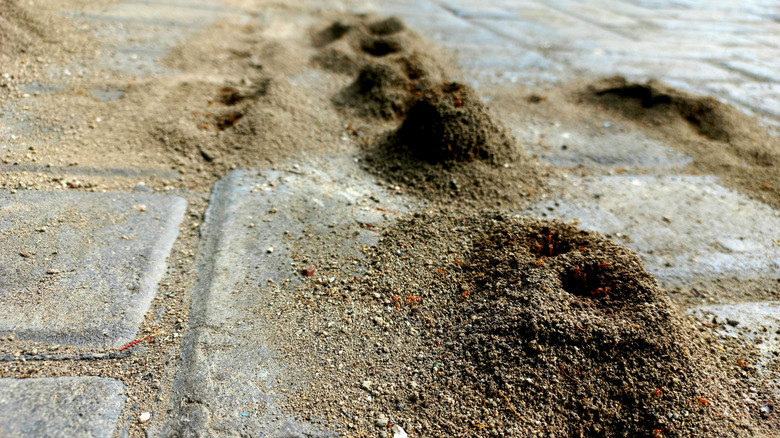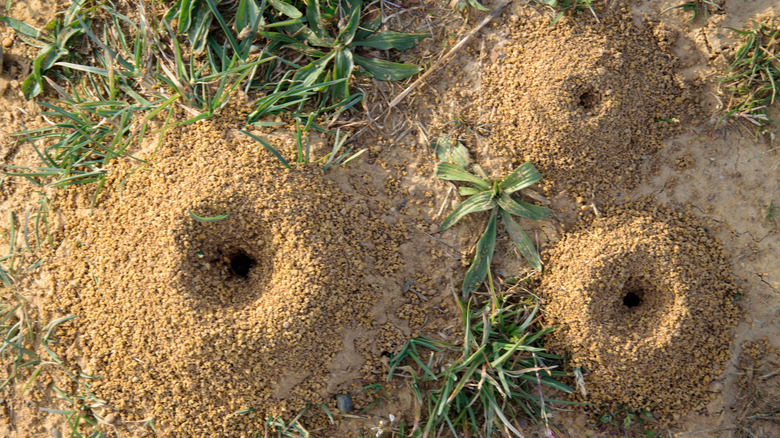The Easiest Way To Eliminate Ant Hills From Your Yard Without Using Chemicals
While you're feverishly Googling tips on how to get rid of ants in the garden, keep in mind that ants occupy an important ecological niche and may serve many beneficial purposes in and around your yard, including keeping the pest insect population down and loosening compacted soil. They also help to distribute seeds and break down dead organic matter, fertilizing the soil. However, it goes without saying that an overabundance of ants nesting too close to your home can be a nuisance, particularly when they march en masse across patio picnics or the swarms of flyers erupt from the ground looking for a date.
Dirt mounds caused by insects, while not typically destructive to turf and gardens, can be a bit of an eyesore, especially particularly large ones. Not all ant species build hills or mounds, but the black ants that are often seen doing so in your yard, in sidewalk or paving stone cracks, or in your garden are called field ants (make sure not to confuse them with carpenter ants, which do not nest in soil). Field ant hills, usually constructed of soil or bits of plant matter, can actually be easily dealt with using rakes, shovels, or other tools you probably already have lying around your garden shed.
How and when to destroy ant hills
If you've had your eye on a particular unsightly ant hill for a while, one of the easiest ways to mitigate the situation is to fetch a rake or shovel and flatten the mound to destroy it. You can also use a garden hose with a forceful stream to wash the hill away. While this likely won't kill all or even most of the ant colony, by interfering with their nesting grounds, it can signal to the colony that it's time to pull up stakes and move on to somewhere safer. You can follow up by dousing the hill with boiling water to eradicate any ants living beneath the hill, and repeat a few times to ensure that the deed is done. If you're already in the habit of using vinegar as an insect garden spray, you can use that near the remnants of the hill to disrupt any lingering pheromone trails that ants may have left behind to help them navigate.
One important caveat: before you reach for the shovel, make sure that the ant hill you're trying to eliminate really is occupied by harmless field ants or some other equally innocuous species. Hills containing biting or stinging ant species can potentially be too dangerous to deal with yourself. This is especially crucial if you live in the southern part of the United States, as invasive fire ants from South America also build mounding nests, and disturbing them can trigger the colony to swarm out and defend itself.

